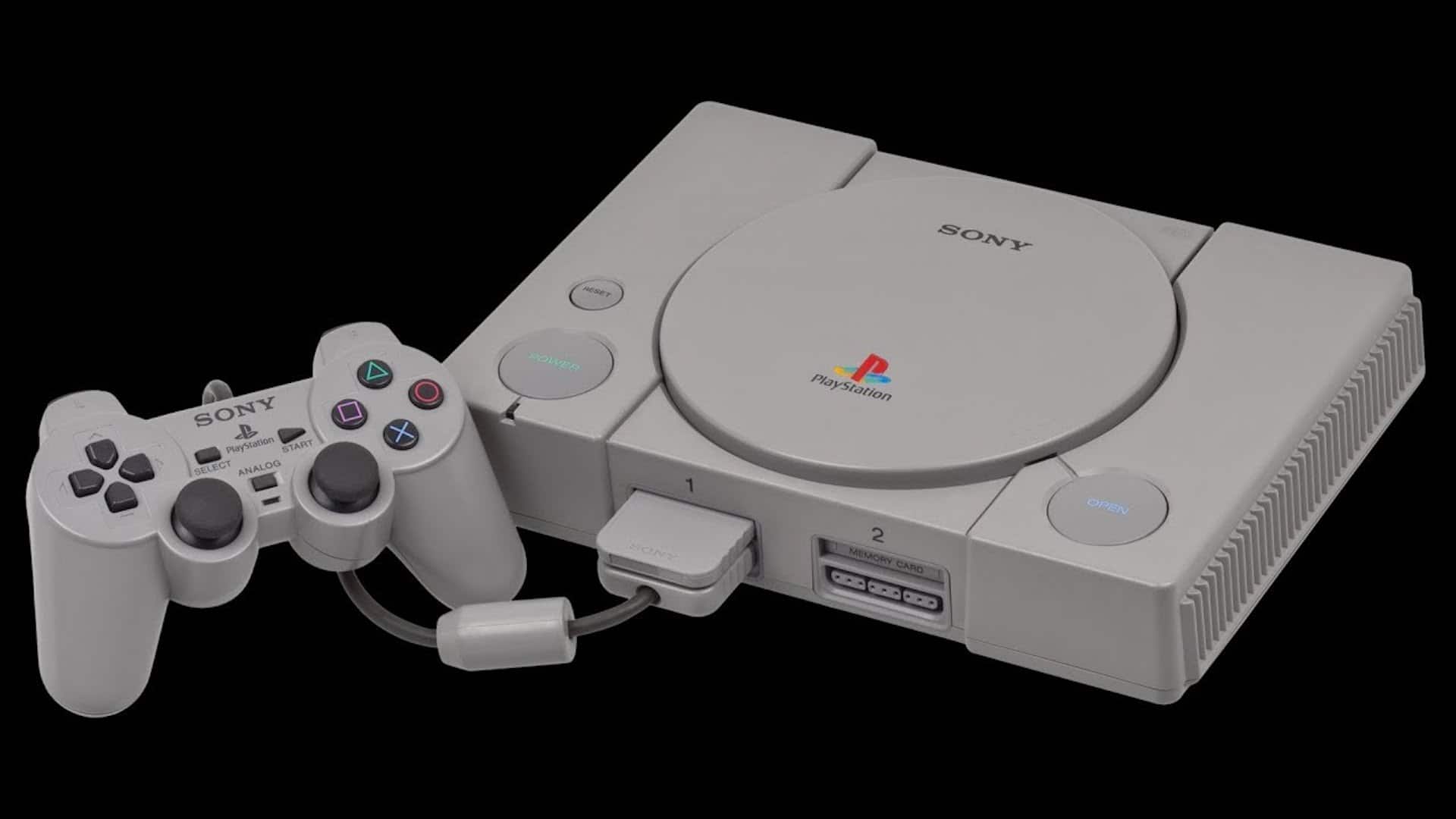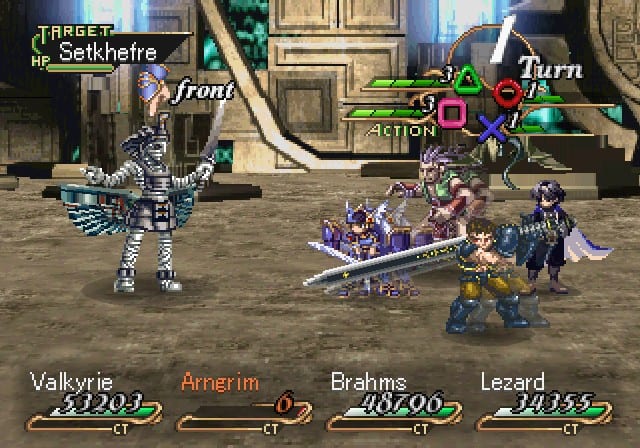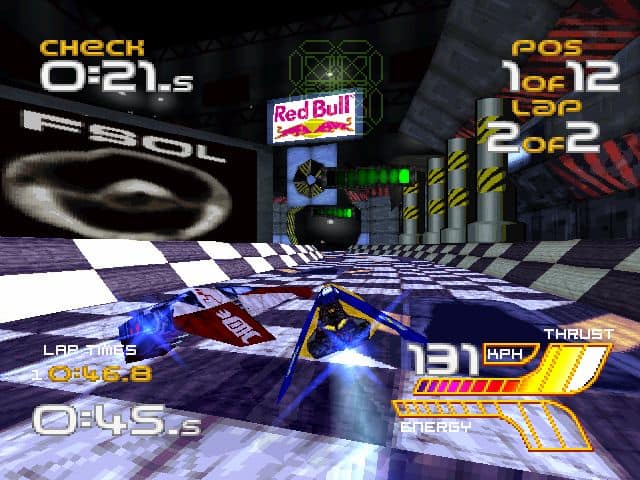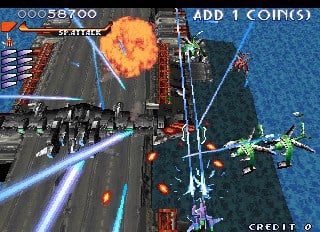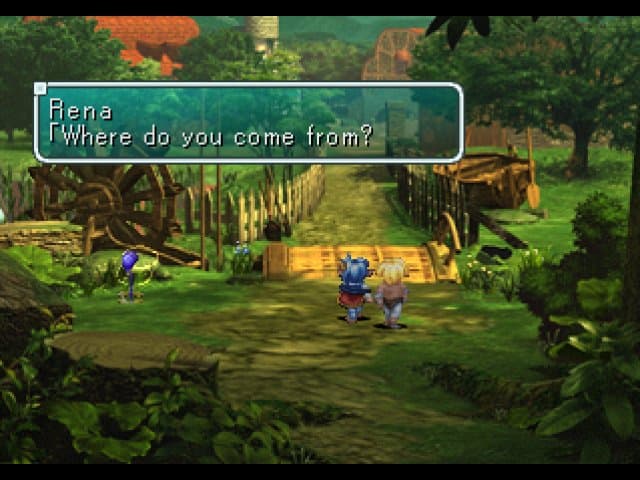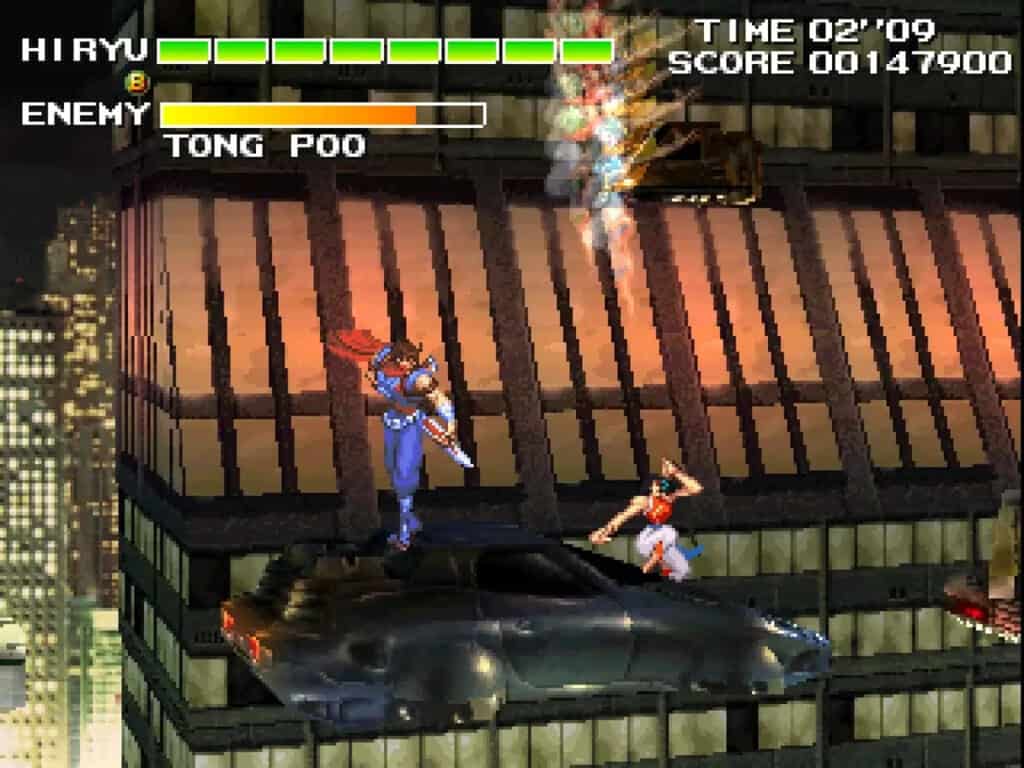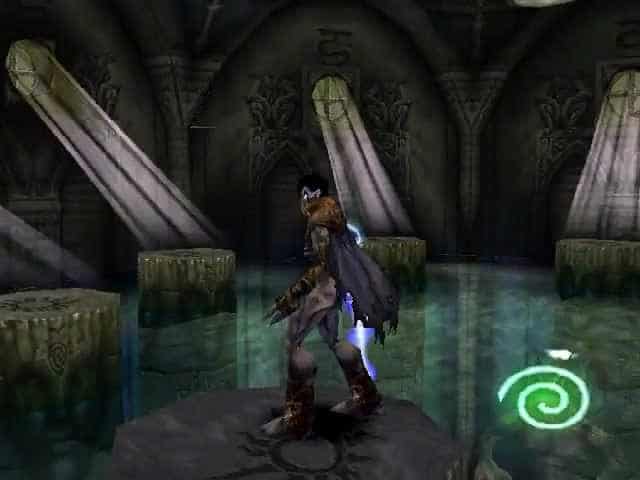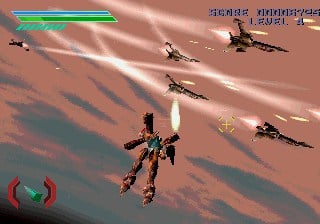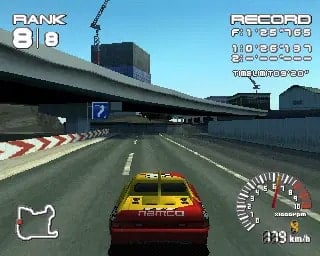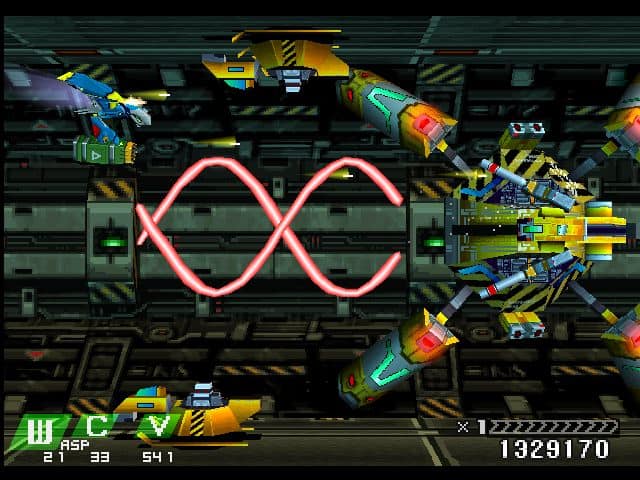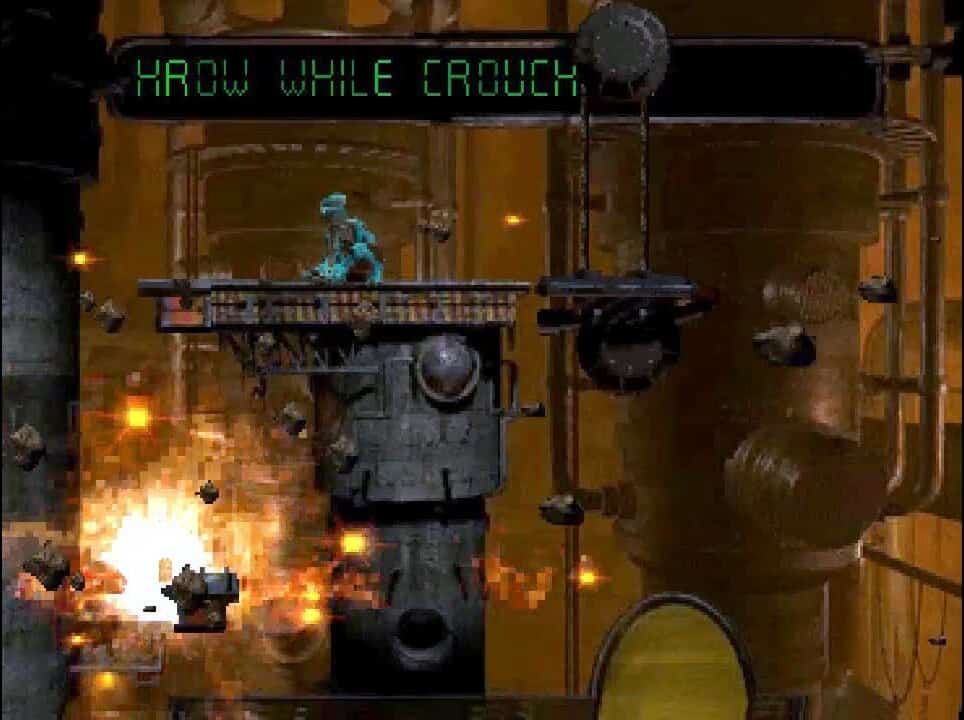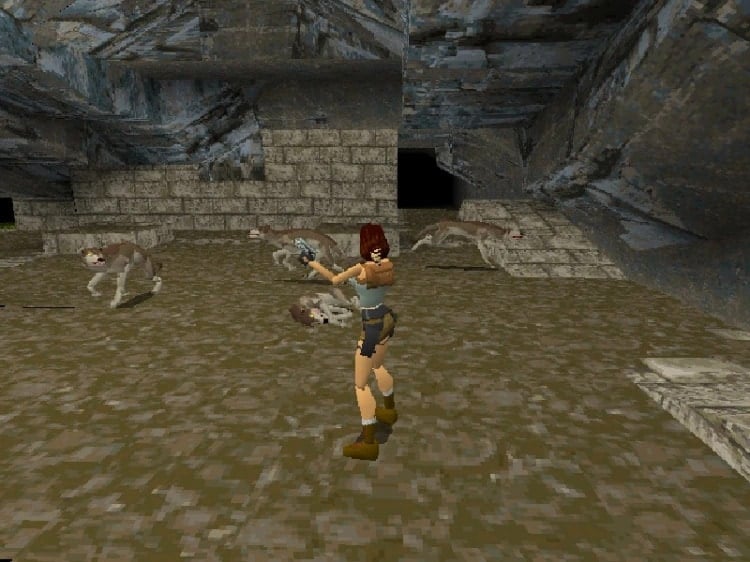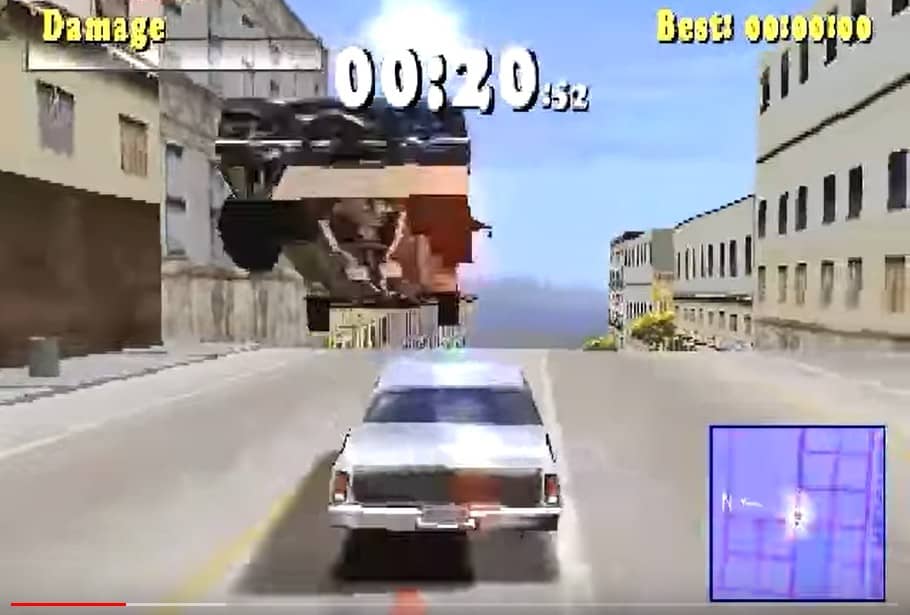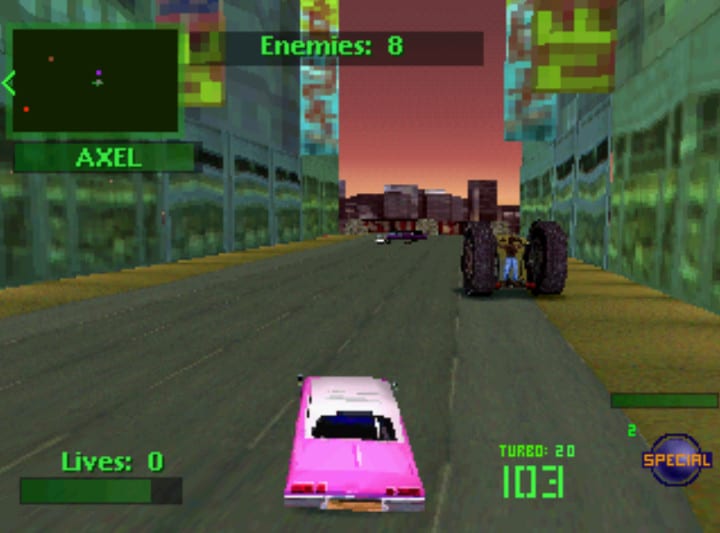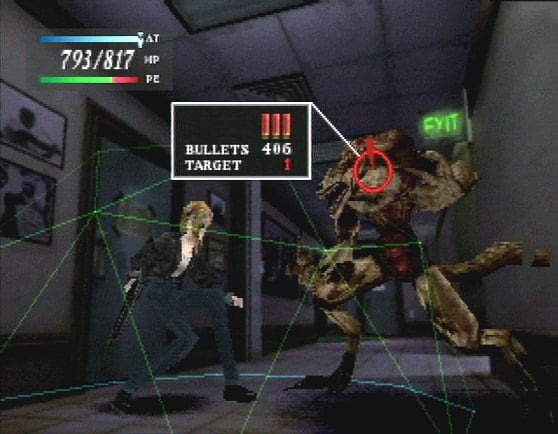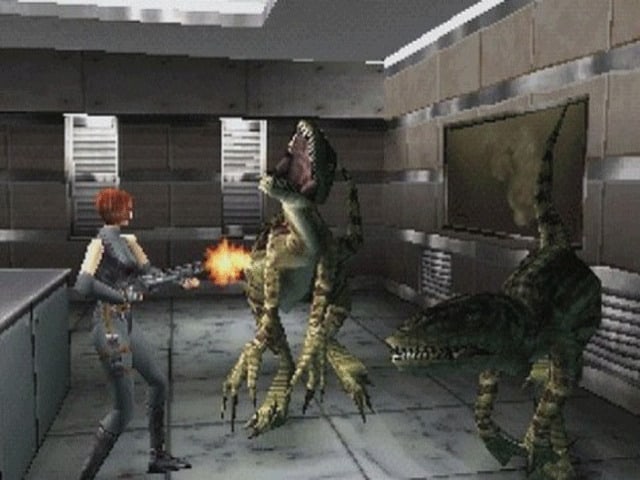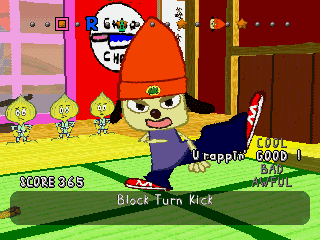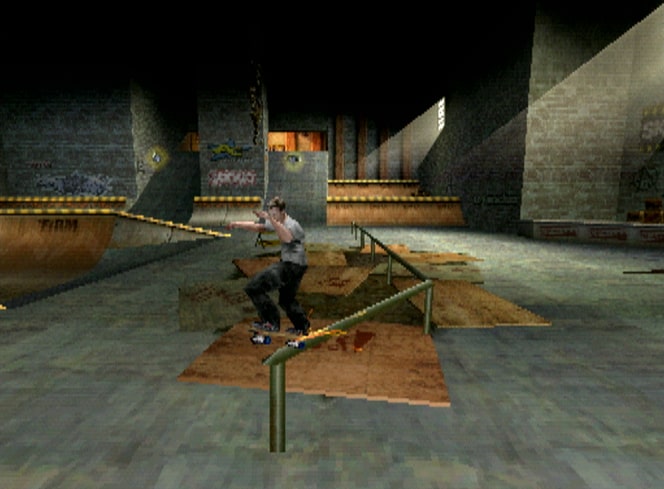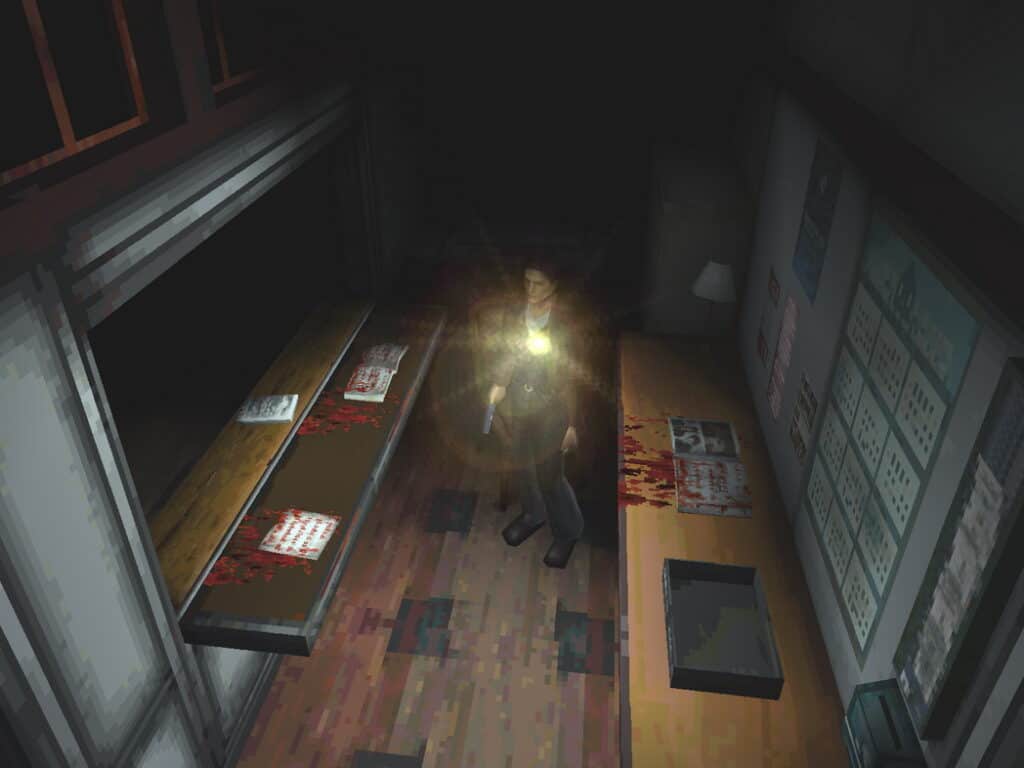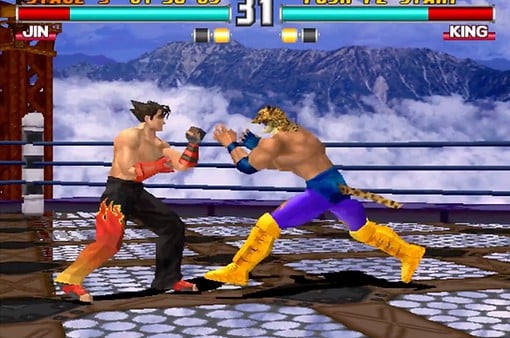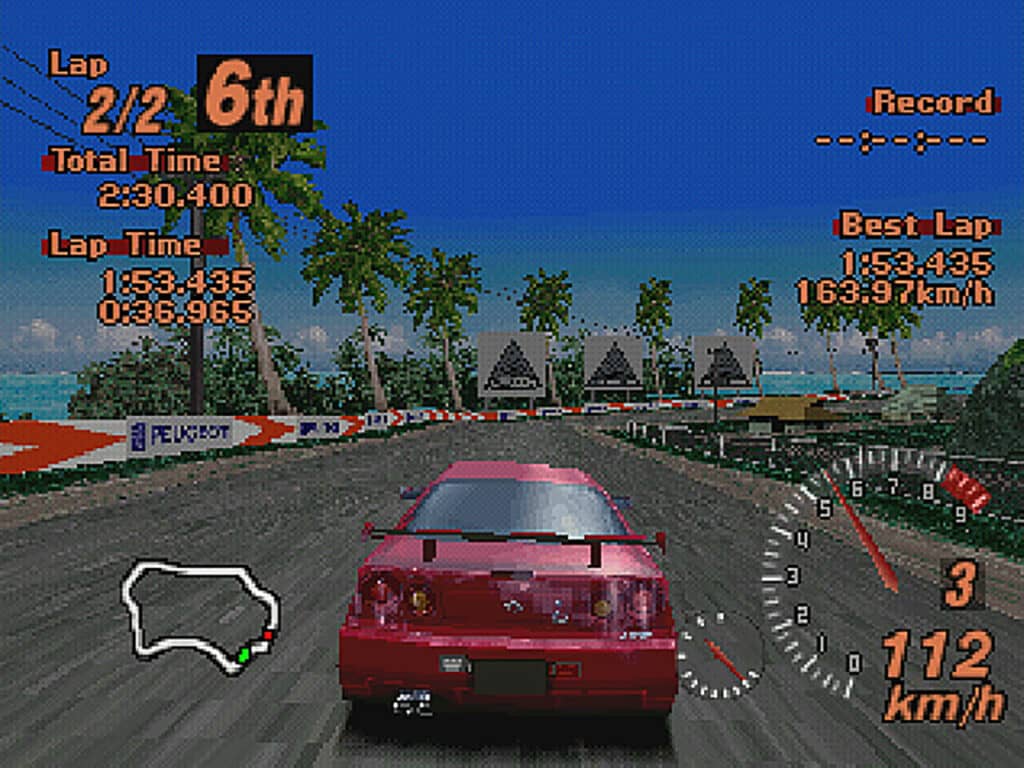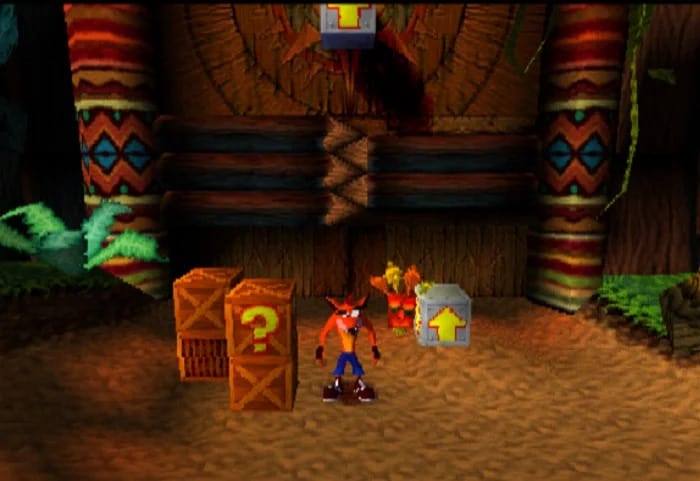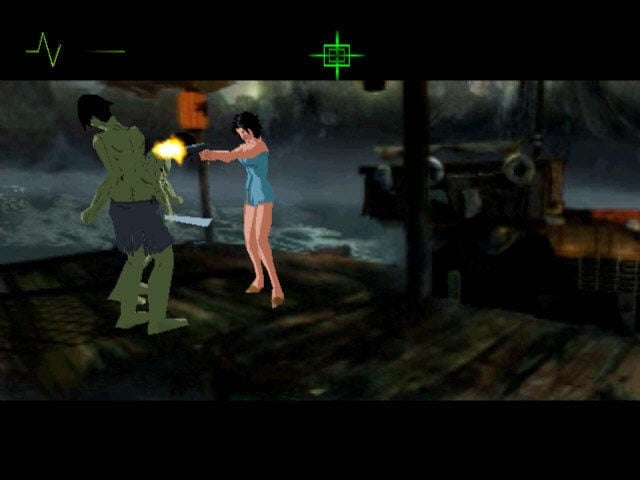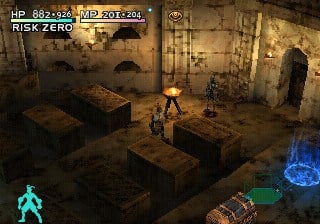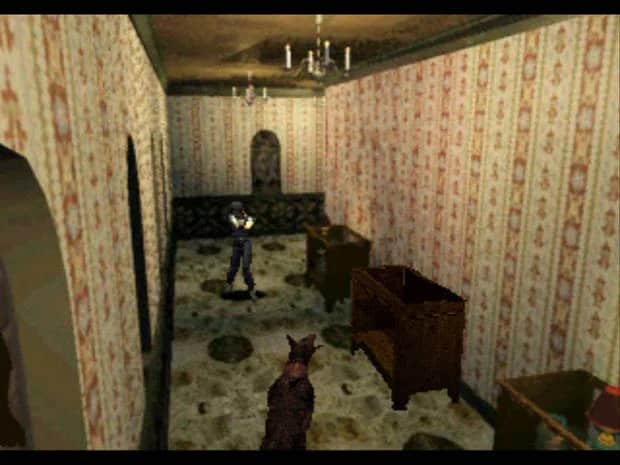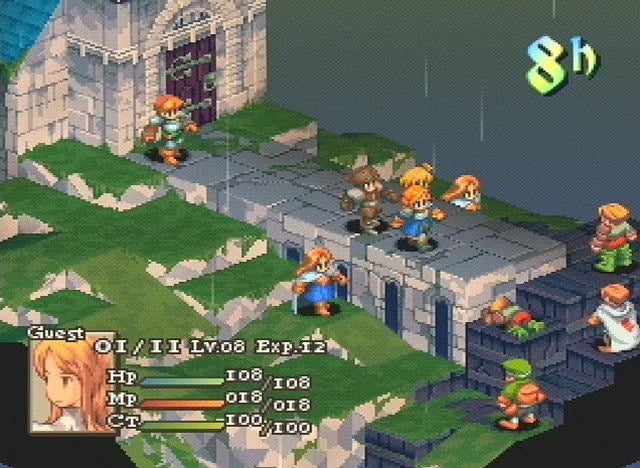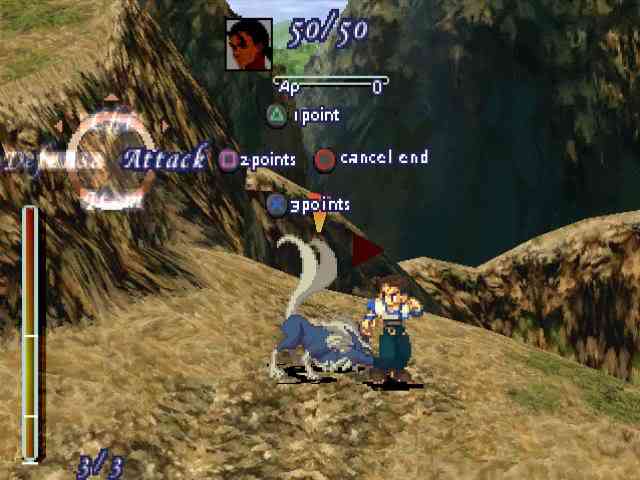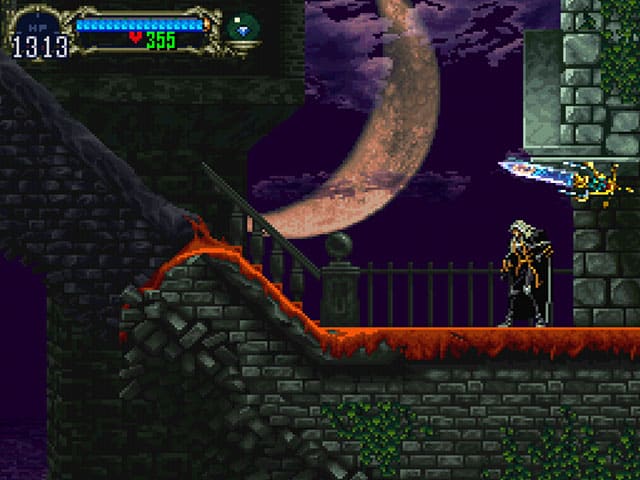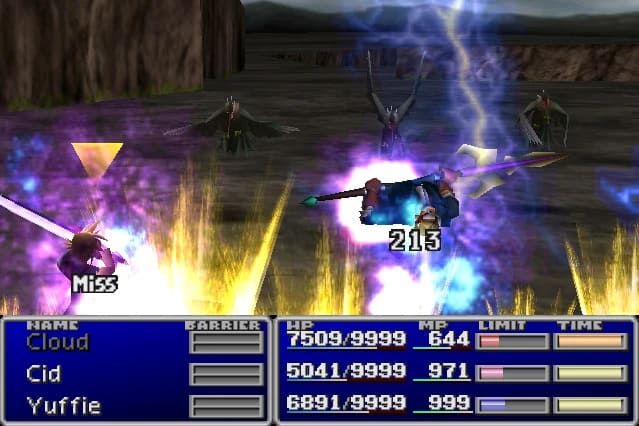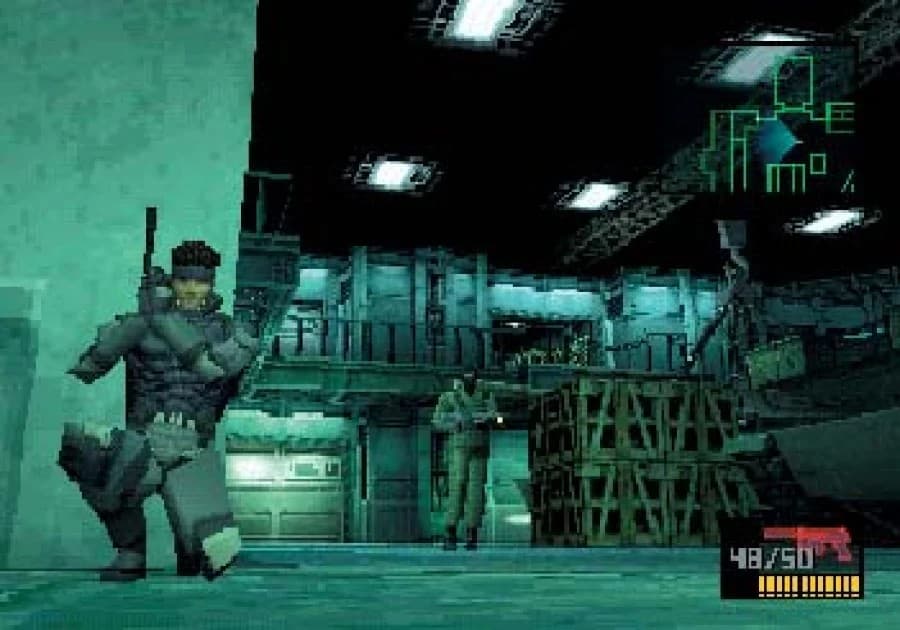It might be hard to believe, but this December marks 30 years since the initial launch of the Sony PlayStation in Japan. Arriving at a time when the console market was dominated by Sega and Nintendo, Sony’s unexpected entry into the console wars with the PlayStation would inevitably change the course of gaming as we know it. Not only did the Sony PlayStation help usher in the CD-ROM format becoming ubiquitous in gaming, but it also allowed developers to create more cinematic and lifelike games than ever before. The 5th console generation is defined by the shift from 2D to 3D, and the undisputed winner and primary innovator in that race is the Sony PlayStation. The challenge inherent in limiting a list of the best games on PlayStation to just 30 entries makes it abundantly clear how important a console the PS1 is.
In addition to several important series being able to trace their origins back to their PS1 debuts, the Sony PlayStation would also end up being the home to a wide variety of landmark entries in some of gaming’s most iconic and successful franchises. Final Fantasy, Castlevania, and Metal Gear each existed long before the PlayStation, but it’s their groundbreaking entries on the console that stand as the pinnacle of each of their respective series. Action games, RPGs, fighting games, arcade and simulation racing games, and shmups; the PlayStation has a little bit of everything for everyone, and the games on this list represent the best of the plethora of titles available on the console.
30. Valkyrie Profile
One of the best JRPGs on a system absolutely bursting with quality entries in the genre, Valkyrie Profile is a game unlike any other. As the titular Valkyrie, the player must recruit an army of fallen soldiers to help them in their quest, which blends traditional turn-based combat with real-time button commands and features a staggering number of potential party members to recruit. The gameplay of Valkyrie Profile helps to make it stand out from other JRPGs of the era, but it’s the game’s excellent storytelling and narrative that help elevate it to being an all-timer. Each of the recruitable allies has their own well-developed personality and backstory, making it all too easy to get attached to the Valkyrie’s Einherjar.
29. Wipeout XL
The original Wipeout was one of the PlayStation’s killer apps at launch, a futuristic racing game with an incredible drum and bass soundtrack featuring licensed music. Though the series would end up receiving two sequels on the PlayStation and a future update on later iterations of Sony’s console, it’s the first follow-up, Wipeout XL, that stands as the pinnacle of the franchise. The mind-bending track designs and physics-defying speed at which players race through them make Wipeout XL an assault on the senses in the best way, and the soundtrack (curated by none other than the Chemical Brothers) is arguably one of the best audio accompaniments in any video game.
28. RayStorm
Both the Sony PlayStation and the Sega Saturn would end up being home to a great number of arcade shmups, made possible thanks to the improvements made in console hardware between the release of the original arcade cabinets and the debut of each system. One of the best shmups to arrive on both consoles is RayStorm (releasing on the Saturn under its original name, LayerSection). RayStorm has all the qualities of a typical vertically-scrolling shmup, only it swaps 2D-pixel art sprites for polygonal 3D graphics and forces the player to actively switch between their main weapon and a homing missile. The action in RayStorm is frantic, the soundtrack is incredible, and the game is tough but fair. There are several incredible shmups on the PS1, but RayStorm stands tall as one of the best.
27. Star Ocean: The Second Story
Before the two companies merged to form one of the biggest studios in RPGs, Square and Enix were friendly competitors who released some of the greatest games in the genre. After working on the initial game in Bandai Namco’s Tales series, several members of the key development team ended up leaving to form their own studio. This new team, Tri-Ace, would go on to create its own incredible JRPG franchise with the excellent Star Ocean, and the best entry in the series is the PS1 classic Star Ocean: The Second Story. Mixing RPG character progression and class customization with real-time action combat, Star Ocean: The Second Story is a great middle ground between the JRPGs of the era and more popular action-adventure games, and its series-best narrative stands as one of the best stories in any RPG on the PS1.
26. Strider 2
Capcom’s surprise release of a sequel to its arcade hit Strider ends up being one of the best run n’ gun-meets-hack n’ slash games on the PlayStation, and possibly of all time. However, while the first Strider game on consoles (the NES port of the arcade original) introduces some light Metroidvania elements and backtracking, Strider 2 opts for a feel much more in line with its arcade pedigree. Still, players are free to tackle levels in a non-linear order, and the ability to revisit previously completed stages to earn better rankings and uncover missed secrets only adds to the replay value (even if it’s not necessary as part of the game’s critical path). Strider 2 is pure Capcom arcade-style perfection, and it’s a shame that fans have yet to receive a new game featuring the ninja super-spy since 2014’s Metroidvania reboot.
25. Legacy of Kain: Soul Reaver
Releasing in 1999 near the latter half of the PlayStation’s life cycle, Soul Reaver stands as one of the first truly “modern” action-adventure games, introducing several of the core gameplay mechanics and definitive elements that would come to define the genre in subsequent generations. The game’s signature mechanic, being able to shift between the land of the living and the land of the dead, makes for some truly inventive and clever puzzle-solving challenges, and the game does a great job of making the player feel like the all-powerful demigod vampire that the main character is supposed to be. As a bonus, the game features a story by Amy Hennig, who would go on to craft the narratives of Sony and Naughty Dog’s excellent Uncharted franchise.
24. Omega Boost
Most people remember developer Polyphony Digital for its groundbreaking Gran Turismo series, but the studio actually has some other impressive titles in its back catalog. One of them is the impeccable mech-action game Omega Boost, which retains the graphical fidelity and satisfyingly complex gameplay loops of the Gran Turismo series but swaps cars for giant robots and racing for third-person shooting. The game’s greatest sin is that it’s arguably too short, but the content that’s there is some of the best 3D shmup action available on the console. Further, Omega Boost is one of the few PlayStation games that maintains a consistent framerate of 60FPS, showcasing Polyphony Digital’s skill at squeezing every bit of power out of Sony’s first console.
23. R4: Ridge Racer Type 4
One of the PlayStation’s most popular launch titles was the console port of Namco’s arcade racing hit Ridge Racer, and the series would end up becoming one synonymous with the PlayStation brand (just like Namco’s arcade fighting hit Tekken). However, as arcade racers were starting to become less popular and simulation racing games were gaining traction on the console, Namco would at least be astute enough to pick up on this trend and adjust its flagship racing franchise accordingly. The final Ridge Racer game on the PlayStation, R4: Ridge Racer Type 4 is an excellent middle-ground between the Ridge Racer series’ arcade origins and the true-to-life simulation physics and mechanics of hits like Gran Turismo, and its ability to offer players the best of both worlds makes it a standout title on the PS1.
22. Einhander
The PlayStation is home to dozens of horizontally and vertically scrolling shmups, but only one of those games has the distinction of coming from Square. Einhander is a game released at a time when Square was experiencing one of the company’s most successful periods, resulting in the publisher taking several significant risks by branching out from RPGs into several other genres. It also happens to be an incredible shmup that begs the question — why hasn’t Square ever released a sequel or a spiritual successor? The game’s key mechanic, being able to steal special weapons from enemies, is a nice twist on a familiar formula, and Einhander‘s excellent 3D visuals and pulse-pounding soundtrack elevate it into being arguably the best shmup on the PS1.
21. Oddworld: Abe’s Odyssey
Sad as it is to admit, games like Another World and Flashback are relics of a bygone era. Add to that list the incredible Oddworld: Abe’s Odyssey, which shares a lot in common with both of those classic 2D side-scrolling adventure games. The cinematic adventure was all the rage on PC at the end of the SNES’ life span and the dawn of the PlayStation. Sony’s new system having its own flagship game in the genre served as a great display of the new kinds of experiences possible on the PS1.
Playing as the titular protagonist and meek Mudokon Abe, players get to first escape a meat-packing plant where the hero finds out he and his species are next on the menu, only to eventually reconnect with his culture and heritage as a Mudokon and restore order to the planet by defeating the nefarious corporation at the heart of its conflict. Abe’s Odyssey is silly and features plenty of irreverent humor, but its gameplay and message are still poignant.
20. Tomb Raider
Tomb Raider is essentially a perfect pitch for a blockbuster franchise. Take one part attractive female video game protagonist, add in a dash of Indiana Jones-style adventure and treasure hunting, and capitalize on the success of the new wave of 3D action-adventure games made possible by the PlayStation’s hardware. The initial reveal of Tomb Raider made it seem like it was little more than Resident Evil-meets-archaeology, but the title actually goes a long way toward establishing itself as a competent adventure game capable of standing on its own two feet.
For starters, the camera in Tomb Raider is not fixed and backgrounds are not static. Unlike Capcom’s Resident Evil, players have a dynamic camera that shifts and rotates to follow the action, focusing on hero Lara Croft and her impressive suite of abilities as she searches for clues about lost civilizations. The first Tomb Raider game is still one of the best in the series (and each of the sequels would be a case of diminishing returns), and its launching of one of the most popular franchises in gaming helps it earn a place as one of the best games on the PS1.
19. Driver: You Are the Wheelman
The Driver series’ first game is a pitch-perfect homage to the legendary cinematic car chases of Steve McQueen films. Long before Grand Theft Auto III would change the landscape of gaming with its open world, Driver set players loose in the streets of San Francisco and tasked them with putting their skills behind the wheel to the test as an undercover cop. The best part about Driver is its realistic physics and palpable sense of speed, which make every run-in with the cops and the ensuing chase sequences feel like pure chaos unfolding on screen. The game has one of the most frustratingly difficult tutorial sequences ever, but if players can get past that first driving test they’re in for a treat with Driver‘s excellent setpiece moments borrowing from classic 1960s and 1970s crime-caper cinema.
18. Twisted Metal 2
The “car combat” genre is one that both begins and also somewhat dies within the PlayStation’s life cycle. For a moment, though, the Twisted Metal series was one of the most popular franchises on the console, and its best entry is undoubtedly Twisted Metal 2. The premise of the game is simple — pick one of over a dozen combatants, enter a sprawling city map, and defeat the other cars to be the last vehicle standing. Players have everything from missiles and machine guns to spectral weaponry available at their disposal, and the ensuing carnage makes every single level a white-knuckle experience in survival. Twisted Metal had players fighting to be the last one standing in an apocalyptic wasteland long before the battle royale genre dominated multiplayer gaming.
17. Parasite Eve
Similar to Einhander, Parasite Eve is another of Square’s unique left-field experiments that sees the company deviate from its traditional JRPG roots to deliver one of the more enticing genre combinations in history. Imagining the survival horror gameplay of Resident Evil meeting the turn-based combat and character progression of a Final Fantasy gets you close to where Parasite Eve lands, but it has enough going for it to where it actually transcends its inspirations to become something new altogether. Unlike the Final Fantasy games, character positioning in Parasite Eve is hugely important, and the full-3D nature of battles makes maneuvering and utilizing precise windows of opportunity for attack a must. Combined with the ability to upgrade and customize weapons and an incredibly weird (but entertaining) story, Parasite Eve is one of Square’s best games on the PS1.
16. Dino Crisis
Dino Crisis is such a perfect mix of inspirations that it’s a miracle it didn’t happen sooner. Of course, leave it up to Capcom to take its already successful Resident Evil formula and blend it with the suspense of Jurassic Park. Just like that description and the game’s title suggest, players are lone agents hoping to repel a dinosaur attack at a mysterious lab in Dino Crisis, and the game does borrow heavily from the survival-horror template established by Resident Evil. That said, Dino Crisis makes good on the promise of blowing away Velociraptors and Tyrannosaurus rex with heavy weaponry, and its ability to not take itself too seriously is a refreshing tonal shift from Capcom’s flagship survival-horror franchise.
15. PaRappa The Rapper
For many players growing up during the PS1 era, the Official PlayStation Magazine was a reliable source of both information and bite-size chunks of new gameplay thanks to its monthly demo disc. The very first issue of the magazine would come packaged with a demo disc featuring none other than PaRappa The Rapper, and though developer NanaOn-Sha likely didn’t know it then, they were single-handedly helping to create the rhythm game genre. PaRappa The Rapper is a game that oozes charm. From its cute, animated 2D graphical style to its absolutely phenomenal soundtrack and casual rhythm gameplay, PaRappa The Rapper is something of a time capsule and a game that only was possible on the PlayStation. The rhythm genre would eventually evolve to include popular licensed music and plastic peripherals, but fans have never forgotten the adorable rapping dog that originally stole their hearts.
14. Tony Hawk’s Pro Skater
Skateboarding games have been around almost as long as the medium itself, but the leap between games like T&C Surf Designs and Skate or Die! to Tony Hawk’s Pro Skater is about as wide a gulf as you can imagine. Arriving at the perfect time in the zeitgeist in which both extreme sports and punk rock were experiencing a bit of mainstream appeal, Tony Hawk’s Pro Skater was the best approximation to real-life skateboarding that had ever been in a video game and it also happened to feature one of the greatest soundtracks chock-full of popular punk, rock, hardcore, and hip-hop artists. THPS represented something of a cultural moment, and the game’s enduring popularity saw it receive a ground-up remake on the PS4 and PS5.
13. Silent Hill
Resident Evil‘s success and popularity gave way to a host of imitators and attempts to cash in on the new genre it created — survival horror. Perhaps the best of them, and a fellow innovator and pioneer in the genre, is Konami’s Silent Hill. Rather than draw on influence from the films of George Romero and Dario Argento like Resident Evil, Silent Hill’s horror is infinitely more cerebral and psychological, creating a sense of ever-present dread and loathing not unlike cinematic horror classic Jacob’s Ladder. The gameplay leaves something to be desired with its somewhat wonky combat and traversal, but Silent HIll’s story and atmosphere still represent peak survival horror.
12. Tekken 3
The launch of the PlayStation would see Namco port two of its most successful arcade games to the console in mostly faithful ports. One of these would be the popular racing game Ridge Racer, and the other is the legendary 3D fighter Tekken. The final Tekken game on the PS1, Tekken 3, not only features one of the best rosters in the series, but it also happens to have a near-perfect balance in terms of its gameplay. Every single character has viability as a combatant, and the “easy-to-pick-up-but-difficult-to-master” nature of its fighting game mechanics makes Tekken 3 an enjoyable experience for novices and experts alike. The Tekken series is still going strong all these years later, but the excellence of Tekken 3 results in it being just as satisfying to play 25 years later.
11. Gran Turismo 2
The first Gran Turismo is another incredible game in the PlayStation library, but like all great sequels, Gran Turismo 2 does everything its predecessor did but better. Not only does the game push the PlayStation to its absolute limit in terms of processing power and graphical fidelity, but the number of real-to-life licensed vehicles available for purchase and realistic driving physics would make Gran Turismo 2 the gold standard of racing games…until the release of Gran Turismo 3. Separating the game into two distinct discs — one for arcade racing and one for the simulation mode — ends up being a stroke of genius, and the selection of courses and finely tuned gameplay still shine all these years later. Simply put, the best racing game on the PS1.
10. Crash Bandicoot
3D platformers are a bit of a dying breed these days, but during the 5th console generation, they were practically a dime a dozen. Still, there were very few titles that could compete with the brilliance of Super Mario 64, which makes Crash Bandicoot‘s excellence all the more impressive. Naughty Dog’s first series for the PlayStation and debut game for the console, Crash Bandicoot takes the platforming foundation laid by the genre’s greats like Super Mario Bros. 3 and introduces some truly impressive boss fights, 3D visuals, and vertically and horizontally scrolling levels that take the player’s precision platforming skills through their paces. The Crash Bandicoot series would eventually get two sequels on the PS1, but the original still stands as one of the console’s defining moments of legitimacy.
9. Fear Effect
Like Silent Hill, Fear Effect is a survival-horror game that uses Resident Evil as a starting point to then go completely off the rails and offer one of the best experiences in the genre. One of the main things helping to set Fear Effect apart from other contemporaries in the genre is its unique visual style, which blends cel-shading with 3D character models and pre-rendered backgrounds. Another unique twist it puts on the genre is its specific blend of horror, which draws heavily from the folklore and mythology of Eastern religions rather than the films and horror fiction of Western cultures. With a potent mix of combat and puzzle-solving and some truly unique inspirations in the genre, Fear Effect is one of the greatest games in the survival-horror genre and an all-time PS1 classic.
8. Vagrant Story
The final game on the PS1 from legendary game director Yasumi Matsuno, Vagrant Story, is completely unlike any RPG before it or since. Though the game takes place in the fictional kingdom of Ivalice (also the setting of Final Fantasy Tactics and Final Fantasy XII — both the product of Yasumi Matsuno), Vagrant Story’s gameplay is a unique and addictive mix of third-person dungeon crawling and tactical turn-based combat. Players can position the main character Ashley Riot in full-3D arenas, then select individual parts of enemies to attack and cripple. Enemies respond to these attacks accordingly, giving the player plenty of incentive to strategize where they focus their offensive. And, like other games in the Ivalice saga, Vagrant Story features one of the most complex and exciting narratives steeped in political intrigue and esoteric suspense.
7. Resident Evil
The original Resident Evil might show its age now as one of the progenitors of the survival-horror genre, which it both helped coin the name for and establish the mechanics of. That said, the first game in the series is one of the most important and impactful titles to release on the PS1 and represents a significant paradigm shift in terms of what developers would consider possible on a home console. There were plenty of games that dabbled with horror imagery and concepts before Resident Evil, but Capcom’s legendary survival-horror game proved that video games could actually be scary. Additionally, Resident Evil would show the merit in taking a cinematic approach to video game storytelling, and its campy B-movie narrative is the foundation for one of gaming’s most important and successful franchises.
6. Final Fantasy Tactics
Tactical RPGs, or SRPGs as they’re known in Japan, are a niche genre. Of course, taking that niche genre and combining it with the world of Final Fantasy is certainly a way to get it on the radars of more casual players and RPG fans, and that’s exactly what Final Fantasy Tactics accomplished in 1997. Hot on the heels of Final Fantasy VII‘s release and mainstream popularity, Final Fantasy Tactics was released at a time when the Final Fantasy brand was experiencing its greatest-ever success. As a result, millions of players with no experience playing SRPGs would get the chance to play what is often considered the greatest spin-off in the genre. Not only is Final Fantasy Tactics the greatest SRPG on the PlayStation, it’s one of Square’s best games on the console and a perfect introduction to one of the greatest RPG subgenres.
5. Xenogears
Xenogears practically accomplish the impossible. The game takes a story steeped in religion, philosophy, and esoteric thought and merges it with a compelling JRPG that blends on-foot real-time combat with turn-based mech sections. It’s a mix that, on paper, shouldn’t work, but in practice, it ends up being one of the best RPGs on the PlayStation and a highlight of the career of legendary creator Tetsuya Takahashi. The game would end up shipping with its second disc mostly unfinished thanks to budget and time constraints, and even in that state, it stands shoulder-to-shoulder with the greatest JRPGs of the era. Xenogears is worth playing for its story alone, but its excellent blending of its disparate on-foot and in-mech sections makes it an unmissable experience on the PS1.
4. Resident Evil 2
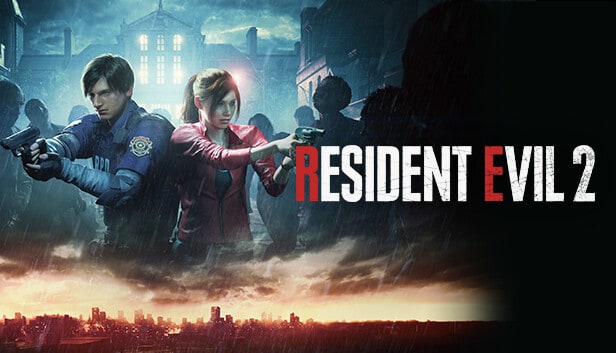
©Resident Evil 2 box art
Resident Evil 2, like most great sequels, takes everything about the original Resident Evil and significantly improves on it. More enemies can appear on screen, environments have more diversity (and are larger), there’s a greater emphasis on story and the voice acting is vastly improved, and players finally get to break out of the Spencer Mansion on the edges of Raccoon City and into the city itself. Resident Evil 2 ends up being the closest thing players would have to a video game adaptation of Dawn of the Dead, and its importance in the Resident Evil franchise goes beyond just establishing important characters and series lore. Resident Evil 2 proves that the survival-horror series is more than a one-trick pony, and it establishes a bar of quality that few other games in the series (except for maybe its remake) are capable of reaching.
3. Castlevania: Symphony of the Night
Castlevania: Symphony of the Night doesn’t just bring the long-running series into the 5th console generation, it creates an entirely new genre in the process. Koji Igarashi’s groundbreaking spin on the classic action-platformer series borrows heavily from Super Metroid‘s large, interconnected map and ability-gated progression. In the process, Symphony of the Night merges the atmosphere, horror, and melee combat focus of the Castlevania series with the mechanics and elements of Metroid, thus creating the portmanteau “Metroidvania”. Symphony of the Night ended up being so popular as to influence several other games in the series after it, but the PS1 original is still one of the greatest Metroidvanias of all time and the foundation on which most modern games in the genre are built.
2. Final Fantasy VII
The Final Fantasy series’ switch from partnering with Nintendo to joining up with Sony for its new PlayStation console was a move made out of necessity. Hironobu Sakaguchi and his core team at Square were eager to push the long-running JRPG series into 3D and tell stories that were much more complex and emotional than had been previously possible. In order to do that, the company would need to make the switch from cartridges to the CD-ROM, and by bringing Final Fantasy VII to the PS1 the company was inadvertently responsible for the PlayStation winning the 5th generation console war.
Final Fantasy VII is more than just the first 3D Final Fantasy. It’s a quantum leap in gameplay mechanics, presentation, and storytelling for games in general. And, lest it be forgotten, Final Fantasy VII features one of the most iconic casts of characters and emotionally affecting character deaths in the history of the medium. A timeless classic of both its genre and within the PlayStation library.
1. Metal Gear Solid
Viewing video games as being little more than a niche hobby or a child’s toy may seem strange now given the medium’s importance in entertainment, but prior to the PS1 that was an entirely common perception to come across. It wouldn’t be until games like Resident Evil and then Metal Gear Solid that people would begin to take notice of the skill and artistry on display in gaming. What makes Metal Gear Solid arguably the best game in the PlayStation’s library is the potential that it represents. Hideo Kojima’s first 3D Metal Gear game would evolve the stealth-action formula he created in the series’ first two titles on MSX, bringing the franchise’s gameplay and narrative into the future — one definitively ahead of its time.
The island of Shadow Moses is the perfect stealth playground, with both interior and exterior spaces that challenge the player to avoid confrontation when possible, use the tools in their arsenal to problem solve and overcome challenges, and get wrapped up in its complex plot full of political intrigue, action, and philosophical musings on war and the nature of humanity. That Metal Gear Solid‘s gameplay and story feel just as fresh now as they did in 1998 speaks volumes about the game’s timeless nature, and the game represents a tipping point in the conversation about interactive media being able to be considered art.
The image featured at the top of this post is ©Sony hardware.
